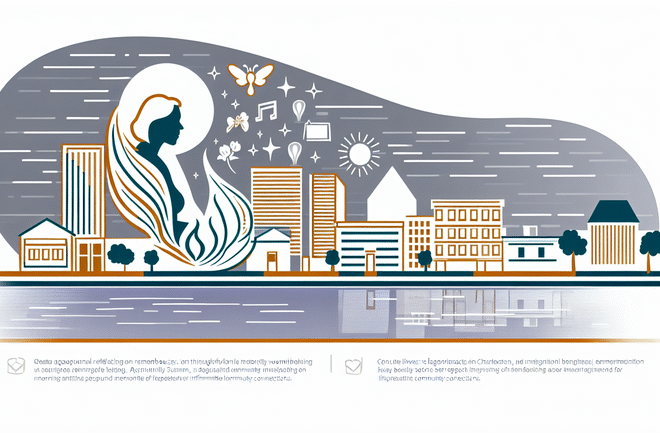“`html
Introduction to Drone Regulations in 2025
In 2025, drone regulations have become increasingly crucial due to their profound impact across various sectors, including commercial, recreational, and public safety. As the use of drones expands, so do the complexities concerning safety, privacy, and airspace management.
In the commercial sector, businesses are leveraging drones for delivery services, agricultural monitoring, and real estate inspections. Regulatory frameworks are necessary to ensure safe operational practices, which can boost public trust and industry growth. For instance, the Federal Aviation Administration (FAA) continually updates its guidelines to facilitate commercial drone integration while addressing safety concerns [Source: FAA].
Recreational drone users also face regulations aimed at minimizing risks associated with flying in populated areas and near sensitive locations. Adhering to these regulations helps prevent accidents and maintains public safety. The emergence of apps and resources that detail local regulations reflects the growing importance of informed civilian drone operation [Source: MIT Technology Review].
For public safety, drones are utilized for disaster response, search and rescue operations, and law enforcement. Regulations governing their use ensure that civil liberties are respected while allowing for efficient emergency assistance. Communities benefit from drone technology under regulatory oversight, which facilitates coordinated responses during crises [Source: Strategies].
Overall, the importance of drone regulations in 2025 cannot be overstated. As technology advances, the continued evolution of these laws will play a vital role in integrating drones safely and effectively into everyday life, supporting innovations while safeguarding individuals and property. For a deeper dive into advancements in related technologies, check out our article on exploring extended reality technologies.
Current Landscape: Understanding Existing Drone Laws
The landscape of drone legislation is evolving rapidly, with key trends expected to dominate regulations in the near future. One significant development is the integration of automation technologies, which promise to streamline the regulatory process for drones. As automated systems become more sophisticated, legislatures are likely to adopt frameworks that allow for automated flight operations, using technologies such as remote identification and geofencing to enhance operational safety and compliance [Source: FAA UAS Advanced Operations].
In terms of airspace management, there is a growing emphasis on creating structured methodologies to accommodate the increasing number of drones in the sky. The introduction of Unmanned Aircraft System Traffic Management (UTM) aims to ensure safe and efficient drone operations, particularly in urban areas. This system will leverage real-time data to assist in coordinating airspace use, mitigating potential conflicts with manned aircraft [Source: FAA UTM].
Lastly, the integration of new technologies such as Artificial Intelligence (AI) and the Internet of Things (IoT) is shaping drone regulations. These technologies may lead to the development of regulatory frameworks that incorporate AI-driven risk assessments, allowing for adaptive regulations that respond dynamically to evolving operational realities [Source: ICAO].
As these trends unfold, stakeholders—including lawmakers, industry leaders, and technologists—will need to collaborate to address the complexities introduced by emerging technologies in drone operations. For further insights into advancements in related fields, consider exploring our article on Advancements in Aerospace Technology.
Safety and Security Concerns with Drones
Drones pose unique safety and security challenges that necessitate stringent measures to mitigate risks. Compliance with regulations is essential for responsible operation, as authorities like the Federal Aviation Administration (FAA) have established guidelines to ensure safety in U.S. airspace. Operators should maintain a visual line of sight with their drones, avoid flying over people, and adhere to designated flight zones to prevent accidents and ensure public safety [Source: FAA].
Moreover, security protocols are crucial for protecting sensitive data collected by drones. Implementing encryption methods and secure data storage practices can help prevent unauthorized access. The use of geofencing technology to restrict drone operations in high-security areas, such as airports and government buildings, further enhances safety [Source: NIH].
Regular training and certification for drone operators are also vital to ensure they understand the legal frameworks and operational best practices. This includes understanding air traffic control communications and the potential implications of violating regulations, which can lead to fines and other penalties [Source: Drone Pilot Ground School].
In summary, adherence to regulatory requirements, robust security protocols, and ongoing education are essential components in addressing the safety and security concerns associated with drone usage across various contexts. For more insights into related technology advancements, you might find our article on exploring drone technologies insightful.
International Perspectives on Drone Laws
As countries increasingly embrace drone technology, regulatory frameworks have emerged globally, yet significant variations persist. For instance, in the United States, the Federal Aviation Administration (FAA) focuses on safety, requiring registration for drones over 0.55 pounds and mandating licenses for commercial operators. Conversely, the European Union’s EASA (European Union Aviation Safety Agency) integrates a more standardized approach across member states, setting out clear classifications for drone operations based on risk levels.
International collaboration is gaining momentum through organizations such as the International Civil Aviation Organization (ICAO), which is working to develop global standards for UAV operations. As part of this effort, ICAO is compiling data from member countries to harmonize regulations, ensuring safety and promoting technological advancement.
Emerging markets like Nigeria and India are also shaping their drone regulations, often inspired by frameworks from more established aviation authorities. Nigeria has instituted a licensing system that integrates drone usage into its national airspace policy, reflecting a growing recognition of drones’ potential in sectors like agriculture and surveillance. India, on the other hand, established the Digital Sky platform to streamline drone registration, flight permissions, and tracking, aligning closely with its larger technological ambitions.
These varied approaches to drone regulation highlight the ongoing need for international dialogue and shared frameworks to address safety concerns, privacy issues, and airspace management. Countries are learning from one another’s experiences, adapting to local needs while aiming to contribute to a cohesive global regulatory environment for drones. Such collaborations will not only enhance safety protocols but can also boost the economic potential of UAV technology worldwide, impacting how nations develop their own drone policies and integration strategies.
For further insights on technological advancements in the aviation sector, check out our article on advancements in aerospace technology.
Sources
“`










